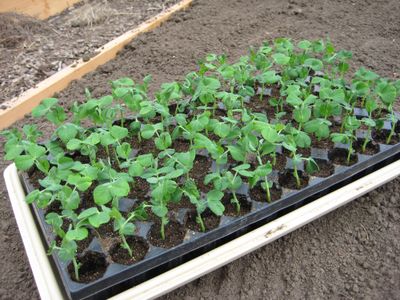Give seeds a headstart on spring

Don’t let the snow on the ground fool you. The garden season will be here before you know it. Until then, there’s plenty of planning and organizing to do so let’s get started.
If you have never grown your own veggies, you’ve come to the right place. Each Sunday in this space, we’ll tackle all of the important topics that are necessary to growing a successful garden.
While it is much too early to start preparing the soil in your garden, there are three important tasks you can tackle right now: select the site, create a plan for what you want to grow and buy your seeds.
When choosing a site for your garden, keep in mind that vegetables need a minimum of six hours of sunlight each day in order to thrive. Over the next few weeks, watch different areas of your yard to locate the sunniest spots.
Avoid choosing a site that has poor drainage as veggies won’t like standing water one bit. In addition, try staying away from trees and shrubs with shallow roots or you will fight them each year while preparing the soil.
If you’re an apartment-dweller, that doesn’t mean you can’t have a garden. With a sunny balcony, you can grow your own veggies in containers. We’ll get into more detail about this during the season.
The Inland Northwest has approximately 120 frost-free days from mid-May through mid-September, although there are some microclimates within the region that can have a shorter season. It’s important to remember this when choosing which types of vegetables to grow.
For example, some winter squash varieties require 120 days or more to reach maturity, which isn’t feasible here. But there are many varieties that mature in far fewer days, so it just means you have to be selective when choosing seeds.
Vegetable seeds and seedlings can be purchased at local garden centers or through mail-order catalogs. We’ll get into the basics of starting plants from seed next week, but as you’re selecting seeds, look at the seed packet for the number of days it will take each plant to mature.
I’m including a list of what I’ll be growing in my garden this year to give you some ideas. Many are heirloom varieties that I’m trying for the first time.
If you grew vegetables last year, remember to rotate your crops. This means avoiding growing vegetables from the same family in the same spot to avoid problems with pests and diseases common to each plant family. Keeping careful records from year to year makes this easier to track.
You will find that planning your garden well ahead of time is one of the secrets to success.